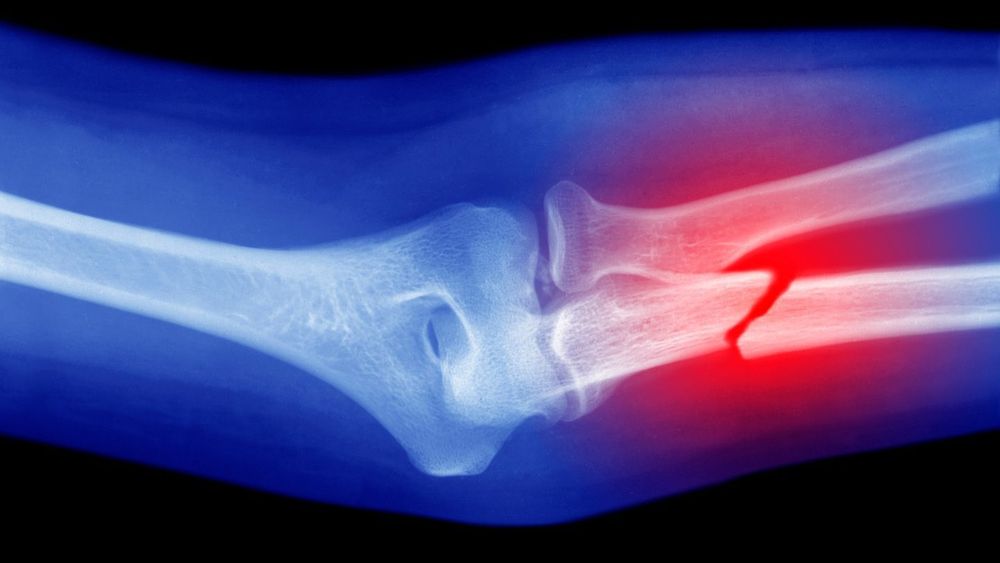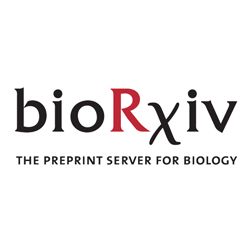"Researchers demonstrated the technology by modifying a hot glue gun to 3-D print the material directly onto bone fractures in rabbits. Instead of using a regular glue stick, they employed a specially made “bioink,” the team reports September 5 in Device."

A handheld ‘bone printer’ shows promise in animal tests
Demonstrated in rabbits, the 3-D printer might someday print bone grafts directly onto fractures, complete with antibiotics to ease healing.
www.sciencenews.org
September 24, 2025 at 2:36 PM
Everybody can reply
3 reposts
15 likes
Researchers demonstrated the technology by modifying a hot glue gun to 3-D print the material directly onto bone fractures in rabbits. Instead of using a regular glue stick, they employed a specially made “bioink,” the team reports.

A handheld ‘bone printer’ shows promise in animal tests
Demonstrated in rabbits, the 3-D printer might someday print bone grafts directly onto fractures, complete with antibiotics to ease healing.
buff.ly
September 21, 2025 at 2:30 PM
Everybody can reply
3 reposts
2 quotes
5 likes
Online now: 3D extrusion bioprinting: rational bioink design and advanced fabrication techniques

3D extrusion bioprinting: rational bioink design and advanced fabrication techniques
The field of 3D extrusion bioprinting has rapidly evolved, presenting significant advancements in tissue engineering applications. Traditionally, the development of printable hydrogel formulations has relied more on empirical approaches rather than rational design principles. However, to better mimic the dynamic and spatiotemporal nature of the extracellular matrix (ECM), novel bioinks with tunable properties and synthetic flexibility are being developed. Simultaneously, variations of extrusion bioprinting methods have been developed to improve the fabrication of sophisticated tissue patterns to emulate their in vivo counterparts. This review will provide a focused overview of recent advancements in bioink design and extrusion bioprinting technologies. By addressing the latest developments in these strategies, this review aims to offer insights into the future direction of extrusion bioprinting.
dlvr.it
July 2, 2025 at 3:14 PM
Everybody can reply
1 likes
💡 Breakthrough at ESOT Congress 2025: Scientists 3D-print human islets using a new bioink. The cells stayed alive and insulin-responsive for 3+ weeks, paving the way for less invasive, off-the-shelf type 1 diabetes therapy.
🧫 Read more here: www.esotcongress.org/press-releas...
🧫 Read more here: www.esotcongress.org/press-releas...

July 8, 2025 at 2:18 PM
Everybody can reply
IN4MER Bioink: A Phosphorescent Biosensing Bio-ink for Multiple Analytes (Glucose, Lactate, Oxygen) Measurements and Temperature Sensing Applications https://www.biorxiv.org/content/10.1101/2025.04.22.650078v1
April 29, 2025 at 2:01 PM
Everybody can reply
This is so interesting (I say as a type 1 diabetic). One of the proposed methods uses "3D printed islets from a “bioink” made of human pancreatic tissue and alginate".
Small, 3D-printed devices, designed to be implanted directly under the skin, could allow people with type 1 diabetes to produce their own insulin

3D printing could enable a long-term treatment for type 1 diabetes
Small, 3D-printed devices, designed to be implanted directly under the skin, could allow people with type 1 diabetes to produce their own insulin
www.newscientist.com
July 5, 2025 at 1:15 AM
Everybody can reply
3 likes
"The direction, angle and depth of the device can be tuned during printing, and the whole process takes just a few minutes.
Lee and his colleagues tested the glue gun and bioink on femoral bone fractures in rabbits."
Lee and his colleagues tested the glue gun and bioink on femoral bone fractures in rabbits."
September 24, 2025 at 2:40 PM
Everybody can reply
3D Printed SCOBY Bioink for Direct Tissue Repair

3D Printed SCOBY Bioink for Direct Tissue Repair - 3D Printing Industry
Researchers at Seoul National University of Science and Technology (SEOULTECH) have developed a Kombucha SCOBY (Symbiotic Culture of Bacteria and Yeast) bioink that could streamline in vivo tissue engineering....
buff.ly
February 6, 2025 at 9:34 AM
Everybody can reply
1 likes
In Situ UNIversal Orthogonal Network (UNION) Bioink Deposition for Direct Delivery of Corneal Stromal Stem Cells to Corneal Wounds https://www.biorxiv.org/content/10.1101/2024.09.19.613997v1

In Situ UNIversal Orthogonal Network (UNION) Bioink Deposition for Direct Delivery of Corneal Stromal Stem Cells to Corneal Wounds https://www.biorxiv.org/content/10.1101/2024.09.19.613997v1
The scarcity of human donor corneal graft tissue worldwide available for corneal transplantation nec
www.biorxiv.org
September 24, 2024 at 2:45 PM
Everybody can reply
Exciting news! 🎉 Our paper on a novel protein-rich bioactive bioink for 3D bioprinting is now published in Advanced Healthcare Materials! 🚀 #Bioprinting #Bioink Check it out below! ⬇️
advanced.onlinelibrary.wiley.com/doi/10.1002/...
advanced.onlinelibrary.wiley.com/doi/10.1002/...

Novel Protein‐Rich Bioactive Bioink Stimulates Cellular Proliferation and Response in 3D Bioprinted Volumetric Constructs
This work describes a protein-rich, low-cost, bioactive bioink, prepared by adding eggwhite powder to functionalize an established alginate-methylcellulose hydrogel blend and enhance its cellular res...
advanced.onlinelibrary.wiley.com
March 10, 2025 at 8:32 AM
Everybody can reply
1 reposts
6 likes
We contribute to the innovation of current treatments and to the sustainability of the #HealthcareSystem : #Bioprinting is emerging as an innovative technology to boost tissue regeneration.
✔ development of bioink
✔ applications for robotic surgery
www.youtube.com/watch?si=kbp...
✔ development of bioink
✔ applications for robotic surgery
www.youtube.com/watch?si=kbp...

Innovative solutions for tissue injury: intraoperative 4D bioprinting
YouTube video by TECNALIA
www.youtube.com
August 4, 2025 at 8:07 AM
Everybody can reply
First post on bsky! We indented and punctured hydrogels to measure how plasticity correlates with cell health and movement. Lower puncture force and yield strength could set a new benchmark for bioink design and promote cell compatibility in 3D culture. pubs.acs.org/doi/10.1021/...
November 21, 2024 at 10:12 PM
Everybody can reply
7 likes
3D Printing of Functional Brain Tissue: Vertical vs horizontal 3D layering led to this success. #3dprinting #brain #bioink #uwisconsin
www.instagram.com/p/C3GfzYVrVQU/
www.instagram.com/p/C3GfzYVrVQU/

www.instagram.com
February 8, 2024 at 9:33 PM
Everybody can reply
First-in-Kind Fully Humanized 3D Bioprinted Human Skin Model Developed by Mayo Clinic Researchers using CollPlant's rhCollagen-Based BioInk. prn.to/49xRMcQ
#science #AnimalRights #EndAnimalTesting
#science #AnimalRights #EndAnimalTesting

First-in-Kind Fully Humanized 3D Bioprinted Human Skin Model Developed by Mayo Clinic Researchers using CollPlant's rhCollagen-Based BioInk
The bioprinted skin model is designed to serve as an alternative to animal testing for preclinical research. According to a scientific article published in the...
prn.to
November 5, 2025 at 10:27 AM
Everybody can reply
The Science Behind the Process: How Does 3D Bioprinting Work? #3DBioprinting #3DPrinting #ArtificialOrgans #Bioink #Biotechnology #healthcaretechnology #OrganTransplant #RegenerativeMedicine #TissueEngineering
pintiu.com/3d-bioprinti...
pintiu.com/3d-bioprinti...

November 4, 2025 at 8:31 PM
Everybody can reply
1 likes
#NMIunterwegs: Die #NMI -Wissenschaftlerinnen Hanna Hartmann und Julia Schütz sind aktuell auf der #DGBM2025 in Dresden. Julia Schütz stellte in einem Vortrag das Projekt Fiber4Ink vor, das sich mit neuen Wegen beim #3DBioprinting beschäftigt.
#Bioink #Elektrospinning #angewandteForschung #innBW
#Bioink #Elektrospinning #angewandteForschung #innBW

October 10, 2025 at 9:07 AM
Everybody can reply
2 likes
“A special bioink made from alginate and decellularized human pancreatic tissue mimicked the support structure of the pancreas, giving islets the oxygen and nutrients they need to thrive,” Dr. Perrier explained.
June 30, 2025 at 7:09 AM
Everybody can reply
In Situ UNIversal Orthogonal Network (UNION) Bioink Deposition for Direct Delivery of Corneal Stromal Stem Cells to Corneal Wounds https://www.biorxiv.org/content/10.1101/2024.09.19.613997v1

In Situ UNIversal Orthogonal Network (UNION) Bioink Deposition for Direct Delivery of Corneal Stromal Stem Cells to Corneal Wounds https://www.biorxiv.org/content/10.1101/2024.09.19.613997v1
The scarcity of human donor corneal graft tissue worldwide available for corneal transplantation nec
www.biorxiv.org
September 24, 2024 at 2:45 PM
Everybody can reply
A #chemistry & Chemical Biology professor and his graduate student at #mcmasteru launch Tessella Biosciences, a start-up based on a Bioink chemical technology that 3D prints biostructures that better simulate lung tissue for biomedical research and drug development […]
Original post on mstdn.science
mstdn.science
June 27, 2025 at 9:09 AM
Everybody can reply
1 likes
#CLGN First-in-Kind Fully Humanized 3D Bioprinted Human Skin Model Developed by Mayo Clinic Researchers using CollPlant's rhCollagen-Based BioInk
https://www.stocktitan.net/news/CLGN/first-in-kind-fully-humanized-3d-bioprinted-human-skin-model-xahq4o9z8q4r.html
https://www.stocktitan.net/news/CLGN/first-in-kind-fully-humanized-3d-bioprinted-human-skin-model-xahq4o9z8q4r.html

First-in-Kind Fully Humanized 3D Bioprinted Human Skin Model Developed by Mayo Clinic Researchers using CollPlant's rhCollagen-Based BioInk
The bioprinted skin model is designed to serve as an alternative to animal testing for preclinical research. According to a scientific article published in the Archives of Dermatological Research, the model developed by Mayo Clinic researchers combines CollPlant's plant-derived recombinant human collagen with distinct and essential human skin cell...
www.stocktitan.net
October 16, 2025 at 11:01 AM
Everybody can reply
Sorghum Proteins Provide Durable 3D Printable ‘Bioink’ Foundation
In a groundbreaking advance for food technology and pharmaceutical manufacturing, researchers at the University of Arkansas have unveiled a novel 3D-printable bioink derived from sorghum proteins. This innovation leverages the…
In a groundbreaking advance for food technology and pharmaceutical manufacturing, researchers at the University of Arkansas have unveiled a novel 3D-printable bioink derived from sorghum proteins. This innovation leverages the…

Sorghum Proteins Provide Durable 3D Printable ‘Bioink’ Foundation
In a groundbreaking advance for food technology and pharmaceutical manufacturing, researchers at the University of Arkansas have unveiled a novel 3D-printable bioink derived from sorghum proteins. This innovation leverages the unique hydrophobic properties of sorghum—a drought-resilient grain known for its remarkable adaptability to diverse climatic conditions—to create highly stable and printable gels suitable for producing precise, structured edible and medicinal products.
scienmag.com
July 2, 2025 at 6:54 PM
Everybody can reply
3 likes
"The bioink consists of two compounds commonly used for 3-D printing implants: hydroxyapatite, which supports bone formation pathways and enhances tissue regeneration, and a biocompatible plastic called polycaprolactone, or PCL, which becomes the scaffold for bone growth."
September 24, 2025 at 2:38 PM
Everybody can reply
University of Arkansas Researchers Explore Sorghum Protein Bioink for Food and Pharmaceutical 3D Printing
3dprintingindustry.com/news/univers...
3dprintingindustry.com/news/univers...
3dprintingindustry.com
July 7, 2025 at 10:09 AM
Everybody can reply
Tessella Biosciences develops new bioink to 3D print realistic lung tissue
3dprintingindustry.com/news/tessell...
3dprintingindustry.com/news/tessell...
3dprintingindustry.com
July 15, 2025 at 7:34 AM
Everybody can reply

